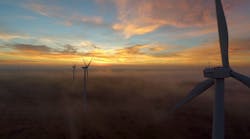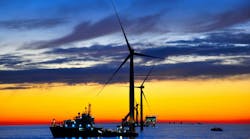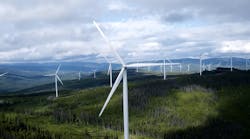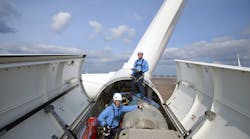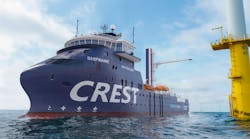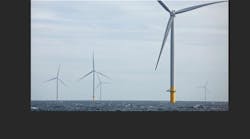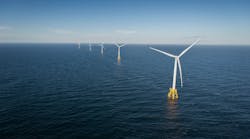Consulting Engineers Group (CEG), Farmington, Minn., has been heeding the winds of change for five years. CEG, a subsidiary of Minnesota utility Dakota Electric Association, provides transmission and distribution engineering to utilities and is going after the wind market — particularly design and build work for wind farms. “It's our biggest area of growth,” says Vince Granquist, a V.P. and senior project engineer with CEG. “It's probably over 75% of the company's focus.”
The firm got into the wind market due to a local connection, Granquist said. “I saw a wind turbine was planned for Carleton College in Northfield, Minn. I live in Northfield and once we got interested in that project, it snowballed as we talked to other people building other small wind-related projects in southwestern Minnesota.”
Over the five years since, CEG has learned that designing and installing collection systems, including the cable, substations and transmission line work involved, is one of the most critical aspects of a wind farm project. CEG purchases hundreds of thousands of feet of 35kV TRXLP underground cable, a critical component of the system, but a standard utility product, which is used to connect the turbines to each other and back to the substation.
The story of why CEG buys its cable where it does is a lesson in the value of services in a commodity line. In 2005, CEG was relatively satisfied with its cable supplier, but got a call from Chuck Healy of ElectroTech Inc., a Minneapolis-based agency, asking that they listen to what Hendrix Wire &Cable had to offer. Hendrix, based in Milford, N.H., had a special interest in wind-farm development, and offered competitive pricing for CEG's wind farm applications, so Granquist agreed.
CEG was pleased with the quality and pricing of Hendrix's 35kV cable, and Hendrix was excited about bringing on another wind-farm customer, so the first CEG purchase order came in June 2006.
CEG says it was during the second year of the relationship that Hendrix sealed its status as a valued CEG partner with two value-added services: “Bill and Hold” and “Capacity Planning.”
The bill and hold service is a means of adjusting for the uncertainty in project lead times versus cable lead times, which is a notorious problem in wind-farm development. Hendrix builds the cable based on the scheduling needs of a given project, then holds the cable on site, free of charge, for an agreed-upon time frame. This program has provided CEG the certainty of cable availability combined with the flexibility to react to unplanned events, says Granquist.
The company's capacity planning service gives CEG access to Hendrix's production schedule, allowing CEG a time frame in which to modify items and quantities to respond to multiple wind projects in development.
“I can say to Hendrix, ‘From a capacity planning point of view, plan on taking up a couple of slots in late July to deliver cable to me in early August, and I will confirm it on June 1,’” Granquist says. That gives Hendrix an idea of what CEG needs. “In the event that one of those slots doesn't work out, we have at least established a ‘fish-or-cut-bait’ date so that it doesn't become an economic problem for Hendrix,” Granquist says.
